As implied by its name, you might assume the ornamental sweet potato vine is for decoration only.
Is this plant edible, like the root vegetable we know and love, or is it merely for show?
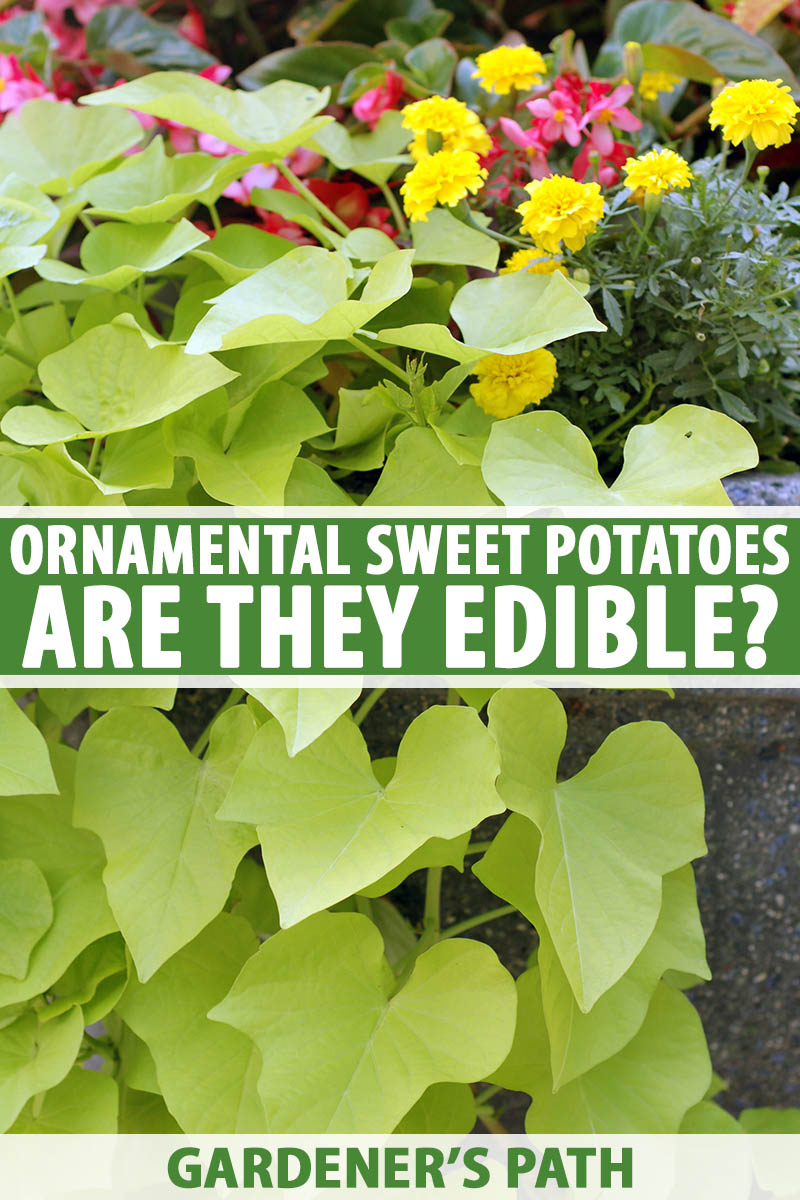
We link to vendors to help you find relevant products. If you buy from one of our links, we may earn a commission.
Here’s what we’ll cover:
What You’ll Learn
What Are Ornamental Sweet Potatoes?
Best known for their colorful green or purple leaves, this vining plant works well indoors and out.
And the cultivars of this plant that have been deemed ornamental are related to the sweet potatoes we love to put on our dinner plates.

In fact, they are of the same species, Ipomoea batatas, though these specially selected cultivars are more commonly grown for their attractiveness (and hence are deemed “ornamental”) rather than being something we might be more inclined to feature in the vegetable garden with a future root harvest in mind.
In addition to their showy leaves, these plants also produce tubers, similar to the root vegetables we see in the grocery store but generally less fleshy and robust. The tubers can easily be propagated to start new plants, and they are simple to grow.

There are more than a few different ornamental series and cultivars available in a range of foliage colors and leaf shapes, in shades of green and purple as well as a variegated multicolored variety, some with heart-shaped leaves, others with three lobes or something resembling that of a maple.
If you can’t get your hands on some slips or seed tubers, they can be purchased as potted plants as well.
Try the bright ‘Light Green’ variety from the Sweet Caroline™ Series by Proven Winners, available in four-packs from Home Depot.
Or the deep purple ‘Sweetheart Jet Black’ from the same series, also available from Home Depot.
They’re gorgeous, and make a worthy addition to the garden! But do they serve a purpose in the kitchen as well? Let’s find out.
Are They Edible?
In short, yes! But we wouldn’t recommend sampling the roots, unless you are desperate, or perhaps particularly curious.
Because they are the same species as the sweet potatoes sold and grown as a food crop, the tubers can be eaten.
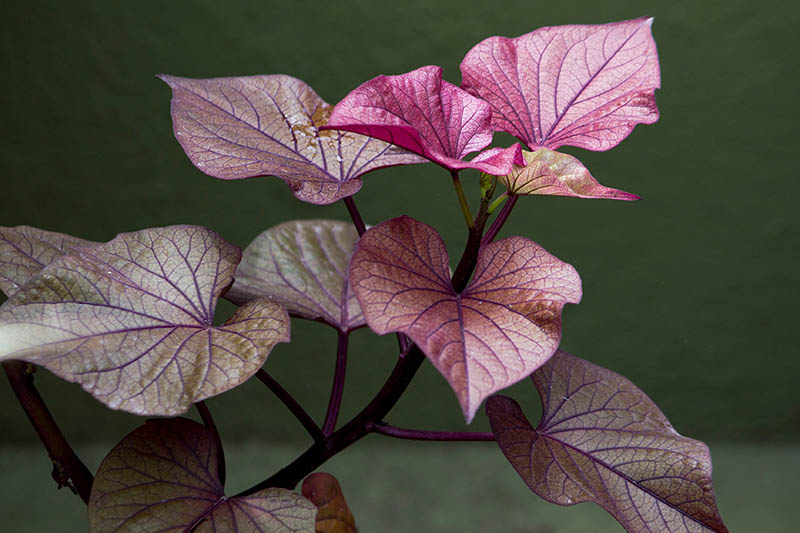
Keep in mind, however, that “ornamental” varieties have been bred for their visually appealing foliage, whereas “edible” types in the US have been bred to have flavorful and satisfying roots. And there are also some types that have been bred specifically for their delicious and healthful leaves – a bit more on that later.
Ornamental sweet potatoes, though they are not poisonous, have roots that are much more bitter in flavor than their food crop counterparts, bordering on unpleasant.
They also tend to mature to a much smaller size than the roots you’re used to finding at the grocery store, or digging out of the earth.
If sweet flesh is what you’re after, choosing a variety specifically selected for eating is recommended.
The leaves and stems of the vine are also edible, with a slightly tangy flavor and a texture somewhat similar to spinach. In fact, they’re popular and enjoyed as a vegetable around the world, throughout many parts of Asia and Africa as well as in Spain.
Some find the leaves to be more appealing when they are boiled or sauteed, since this gives them a more tender texture and removes some of their bitterness, while others like to enjoy them raw in salads, or deep fried in fritters.
The young leaves are the most tender, and some prefer to skip the leaves altogether and just enjoy the stems.
Called kamote (or sometimes camote) tops, the foliage of this species is a common vegetable enjoyed in the Philippines. In Korea, you might enjoy goguma julgi bokkeum or goguma julki namul, stir fried sweet potato vine banchan made with fresh or dried and reconstituted stems.
Vines don’t often produce flowers, and we were unable to find any instances of them being featured in any type of cuisine.
While your ornamental sweet potato plants may be edible, this does not mean you should be eating them. Not the roots, at least. Again, we recommend leaving those alone to grow underground, and perhaps to divide into slips for rooting and planting out when you want to start new vines.
As for the foliage, it’s lovely to admire in the garden. And you can eat it as well, as long as it’s treated as an edible throughout the growing process and not exposed to harmful chemicals.
Try adding the leaves to salads and stir fries, and see if you like them. Or experiment with the shoots of your “edible” crop, and see how those taste.
If sweet tubers are more your speed, try planting something like ‘Centennial’ for eating.
Packages of 12 or 25 bare roots for planting are available from Burpee.
Nutritional Value and Potential Health Benefits
So, the roots might not be your first choice in terms of taste. But is the decorative foliage good for your health?

One cup of raw, chopped sweet potato leaves comes in at only 15 calories, 1 gram of protein, 0.2 grams of fat, and 2 grams of fiber. They are packed with micronutrients including magnesium, potassium, vitamin A, and lutein.
The combination of vitamin A and lutein makes them beneficial for our eyes, helping to maintain our retinas and protecting against oxidation that causes cell damage.
More research is needed in this area, but lutein may also protect against certain cancers like that of the colon, breasts, lungs, and skin.
A Note of Caution:
Please keep in mind that plants that have not been grown for edible use may be sprayed with toxic pesticides or herbicides to keep them looking their best. If you are foraging in a neighbor’s garden for ornamental sweet potato stems or leaves, or purchasing full-sized plants from a nursery, be sure to find out how these plants were grown first, and do not eat anything that is potentially unsafe to consume.
According to an article published in the journal “Molecules” in 2019, a new variety of leafy sweet potato called ‘Fushu’ is grown today in China for its edible leaves and shoots rather than the tubers.
Purple varieties (‘Fushu No. 23’ in particular) have been found to boast high levels of anthocyanins, antioxidant flavonoids that provide the plants with their pigment.
Anthocyanins can have anti-inflammatory effects in the body, and have been shown to have positive health effects, including lowering blood sugar and helping to prevent cardiovascular disease.
Though similar studies have not been done on purple ornamental cultivars, the anthocyanins responsible for their attractive pigmentation would likely have positive effects in the body as well.
As far as the tubers go, there is not much information about their nutritional content available since we typically consume those of the varieties that are cultivated as edibles. The ornamental tubers are likely similar in nutritional content to their tastier counterparts.
There are no distinct known benefits to eating decorative sweet potatoes compared to the ones you typically find at the grocery store or in the veggie patch.
More Than Just Looks
They might not be the tastiest roots in your garden, but talk about versatility!
Ornamental sweet potato vines can add a pop of color to your yard, and the leaves and stems of this species can bring something new to your plate.
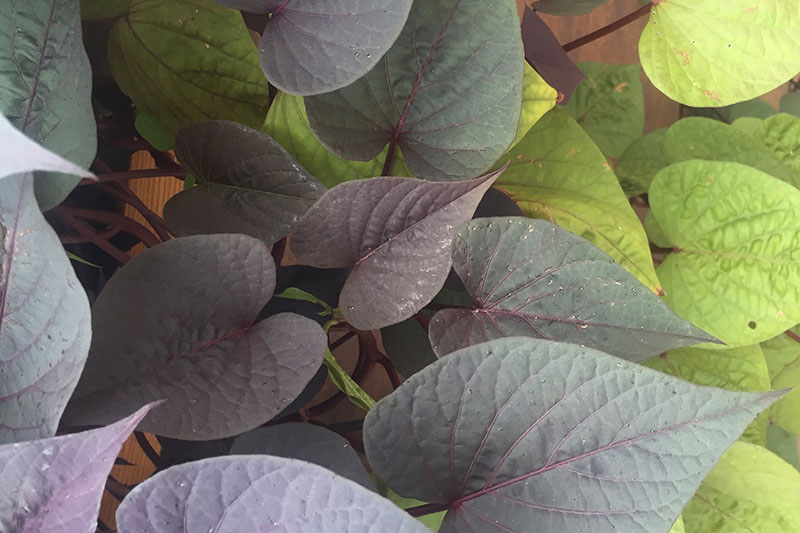
Will you try cooking some up? Do you have a favorite recipe for the stems or leaves to share? Let us know in the comments!
If you want to learn more about sweet potatoes, take a look at these articles next:
© Ask the Experts, LLC. ALL RIGHTS RESERVED. See our TOS for more details. Product photos via Burpee and Proven Winners. Uncredited photos: Shutterstock. With additional writing and editing by Allison Sidhu.
The contents of this article have been reviewed and verified by a registered dietitian for informational purposes only. This article should not be construed as personalized or professional medical advice. Gardener’s Path and Ask the Experts, LLC assume no liability for the use or misuse of the material presented above. Always consult with a medical professional before changing your diet, or using supplements or manufactured or natural medications.
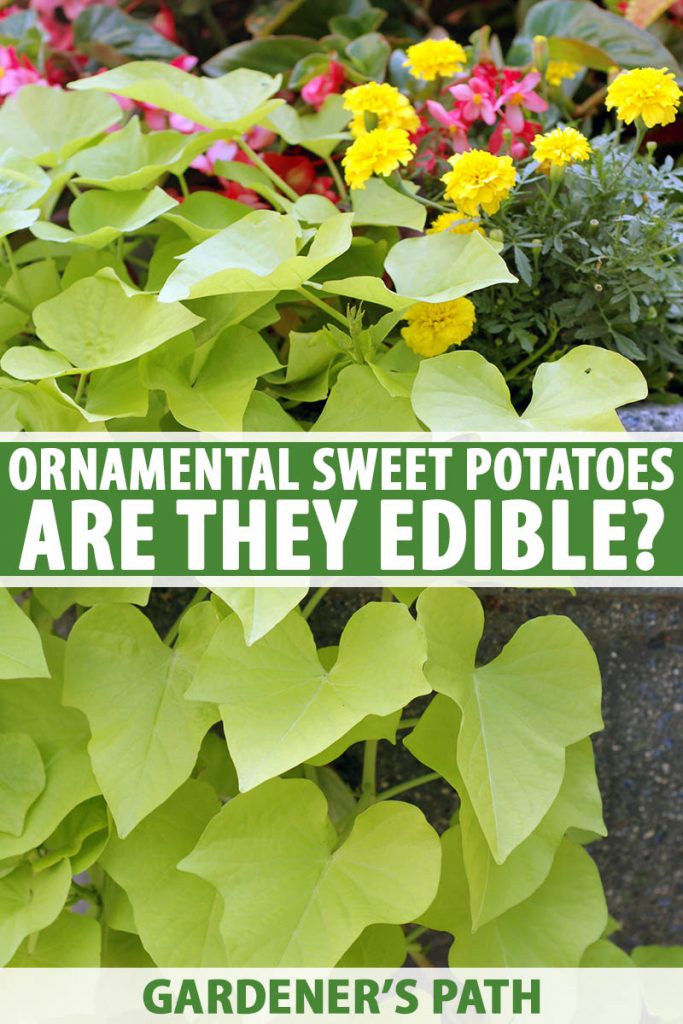
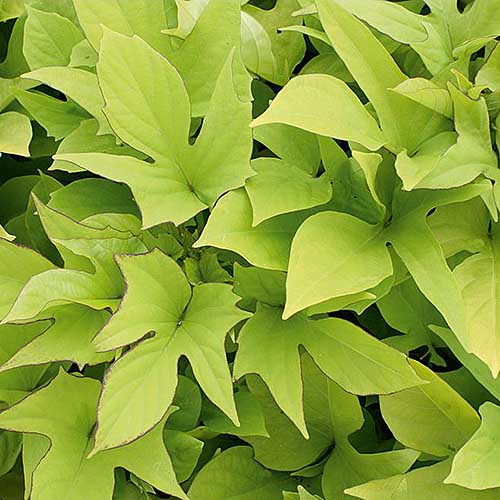
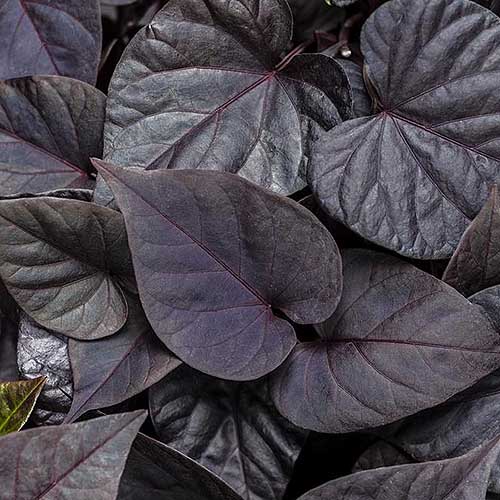
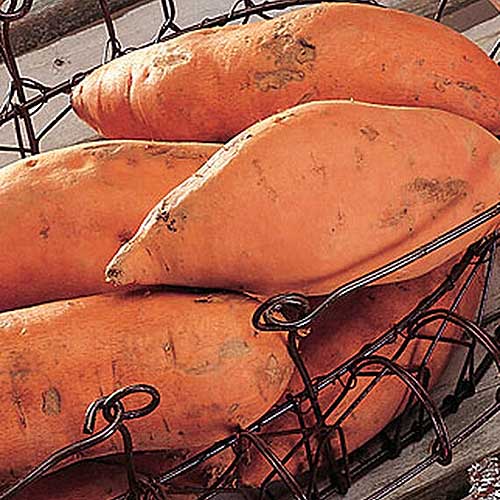


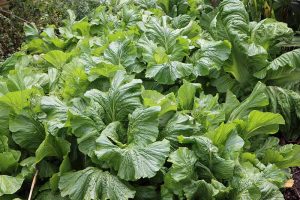
I used to eat the leaves with stem when I was a kid. My mother blanched them and put fresh ginger, green onions, vinegar and anchovies sauce. Yummy.
Sounds delicious Ami, thanks for sharing!